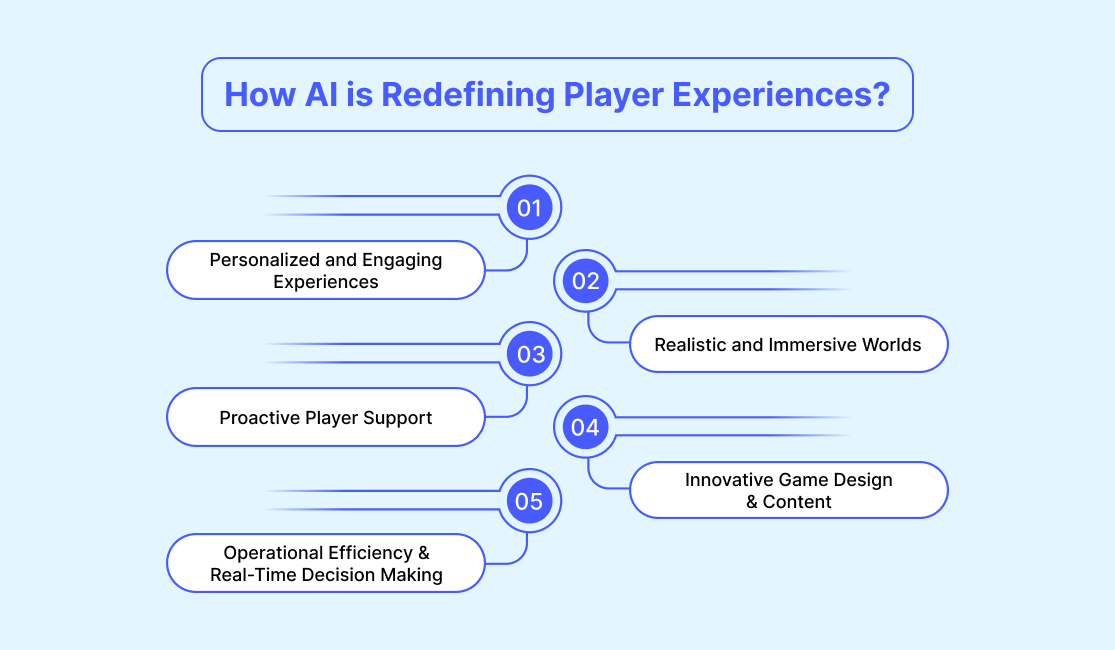The Hookup Critic
Your go-to source for honest reviews and tips on dating and relationships.
Crafting Player Experience Personalization: A Recipe for Engagement
Unlock the secret to captivating player experiences! Discover how personalization can transform engagement in gaming and keep players coming back.
Understanding Player Preferences: Key Ingredients for Personalization
Understanding player preferences is crucial for creating engaging experiences in gaming. Personalization involves tailoring content to meet the specific desires and needs of individual players. By analyzing gameplay data, feedback, and behavioral trends, developers can identify the key ingredients that drive player satisfaction. Factors such as game mechanics, narrative choices, and aesthetic designs play critical roles in shaping a player's experience.
To effectively implement personalization, it's essential to focus on three main components: user engagement, content variety, and interaction opportunities. First, understanding how players engage with different elements of the game allows developers to refine features that resonate with their audience. Second, offering a diverse range of content can cater to varied tastes and preferences. Lastly, fostering interaction through community features or social elements can enhance the overall gaming experience, creating a more immersive and personalized environment for players.

Counter-Strike is a popular first-person shooter game that pits teams of terrorists against counter-terrorists in a variety of objective-based game modes. Players engage in tactical combat, showcasing skills in strategy and teamwork. For players looking to enhance their gaming experience, a stake promo code can provide valuable bonuses.
How Personalized Experiences Drive Player Engagement: Insights and Strategies
Personalized experiences have become a fundamental aspect of driving player engagement in various gaming platforms. By tailoring content to individual player preferences, game developers can significantly enhance user satisfaction and retention. Studies show that players are more likely to remain active in a game that acknowledges their unique choices and play styles. For instance, implementing algorithms that analyze player behavior can lead to personalized challenges, rewards, and notifications, creating a more dynamic and captivating gaming environment.
To effectively utilize personalized experiences in enhancing player engagement, game designers should consider several strategies. Firstly, collecting and analyzing player data is crucial; it allows developers to understand user behaviors better. Secondly, offering customized in-game options, such as skins, missions, or storylines, can keep players intrigued and invested. Lastly, regular feedback loops—such as in-game surveys or community forums—enable players to voice their preferences, further refining the gaming experience and fostering a sense of community among users.
What Are the Best Practices for Crafting Personalized Player Experiences?
Creating customized player experiences involves understanding your audience and leveraging data to enhance engagement. Best practices for crafting these experiences include segmenting your players into distinct categories based on their behavior, preferences, and gameplay style. For instance, you might consider using surveys or data analytics tools to gather insights about player habits. This information can then be used to tailor content, rewards, and challenges that resonate with specific player segments, thus increasing their overall satisfaction and retention.
Another effective strategy is to implement dynamic content that evolves based on player actions. For example, introducing variable quests or challenges that adapt to a player's skill level not only keeps them engaged but also provides a sense of achievement. Additionally, regular updates that reflect user feedback can significantly enhance the personal touch of the experience. In summary, the key to successful personalized player experiences lies in comprehensive data analysis and responsiveness to player needs and preferences.